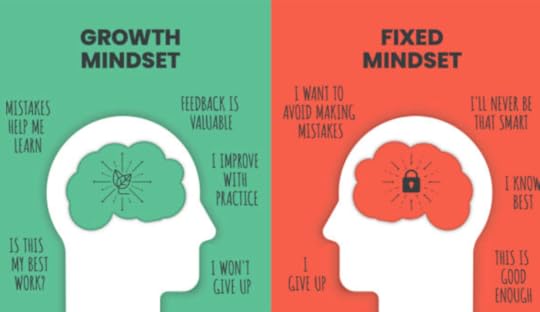Lolly Daskal's Blog, page 22
April 29, 2024
4 Game Changing Methods to Combat a Culture of False Urgency at Work

In today’s professional sphere, a staggering 70% of employees report feeling overwhelmed by urgent tasks, leading to a rise in stress levels, according to a survey by the American Psychological Association.
Studies show that high-urgency workplaces see a 40% drop in high-quality decision making. These statistics underscore a critical issue: the chronic sense of urgency in the workplace is not just a pressure point but a pervasive inhibitor of true productivity and well-being.
As an executive coach, I assist my clients in cutting through this noise, helping them to identify what truly warrants immediate attention from what can be strategically scheduled or delegated. This distinction is vital for leaders who wish to foster environments where urgency is a tool for progress, not a perpetual alarm bell that leads to decision fatigue and burnout.
Method 1: Prioritizing Purpose Over BusyworkOne of the most effective ways to counteract false urgency is by instilling a sense of purpose within your team. Leaders should shift the focus from busywork and arbitrary deadlines to meaningful goals and objectives. Encourage your team to question whether a task contributes to the larger mission of the organization. By aligning every effort with a clear purpose, you’ll create a workplace where every action has value.
Method 2: Cultivating Mindful Time ManagementThe constant rush often stems from poor time management practices. Encourage your team to embrace mindful time management techniques. This involves setting realistic priorities, breaking tasks into manageable chunks, and eliminating multitasking. By valuing focused, uninterrupted work, you’ll find that true productivity can flourish without the unnecessary stress of false urgency.
Method 3: Encouraging Open CommunicationFalse urgency thrives in environments where communication is lacking. Foster open and transparent communication within your team. Encourage team members to share concerns about unrealistic deadlines or excessive workloads. By listening to your team’s input and addressing their concerns, you’ll create an atmosphere of trust and collaboration.
Method 4: Promoting Work-Life BalanceA culture of false urgency often leads to overworked and burnt-out employees. As a leader, prioritize work-life balance for yourself and your team. Encourage employees to take breaks, use their vacation days, and unplug from work outside of office hours. Recognize that a well-rested team is not only happier but also more productive in the long run.
Combatting a culture of false urgency is essential for the well-being of your team and the success of your organization. By prioritizing purpose, practicing mindful time management, fostering open communication, and promoting work-life balance, you can lead your team to a more fulfilling and productive work environment.
Lead From Within: True leadership is about steering your team away from the chaos of false urgency towards a path of purpose and productivity.
#1 N A T I O N A L B E S T S E L L E R
The Leadership Gap
What Gets Between You and Your Greatness

After decades of coaching powerful executives around the world, Lolly Daskal has observed that leaders rise to their positions relying on a specific set of values and traits. But in time, every executive reaches a point when their performance suffers and failure persists. Very few understand why or how to prevent it.
Additional Reading you might enjoy:
The post 4 Game Changing Methods to Combat a Culture of False Urgency at Work appeared first on Lolly Daskal.
April 26, 2024
Why Your Company Can’t Survive Without an AI Ethics Committee

As an executive leadership coach, I advise my clients on various aspects of leadership, and one topic that has been gaining increasing importance in today’s rapidly evolving business is the role of ethics in artificial intelligence (AI).
Artificial intelligence has transformed industries, improved efficiency, and provided innovative solutions, but it also brings along a set of ethical challenges that your company can’t survive without addressing. In this blog post, we will explore why your company really needs an AI ethics committee to not only survive but thrive, and how it can help navigate the ethical complexities of AI technology.
Ethical Challenges in the Age of AIThe widespread integration of AI into business processes has undeniably brought about significant advancements, but it is not without its ethical challenges. AI systems have the potential to inadvertently reinforce bias, infringe upon privacy, and, in certain cases, result in dire consequences, such as fatal accidents. The sheer scale at which AI operates means that when issues do arise, their repercussions can be extensive. Let’s explore another example beyond the healthcare scenario to illustrate the ethical complexities surrounding AI.
Imagine an AI-driven hiring system used by a company to identify potential candidates for job openings. Upon analysis, it becomes evident that the system consistently favors candidates from a particular educational background or geographical location, even though there is no concrete evidence that such factors correlate with job performance. This bias in candidate selection perpetuates inequality and limits opportunities for talented individuals from diverse backgrounds.
The Role of an AI Ethics CommitteeTo address these ethical challenges effectively, it’s essential to establish an AI ethics committee within your organization. This committee should comprise a diverse group of professionals, including ethicists, lawyers, technologists, business strategists, and individuals skilled in identifying bias. Their primary responsibility is to review any AI systems developed or purchased by your firm, identifying potential ethical risks and devising strategies to mitigate them.
Setting Up an Effective AI Ethics CommitteeEstablishing a successful AI ethics committee requires careful planning and execution. Here are some key steps to consider:
Diverse Expertise: Ensure that your committee members represent various areas of expertise, as ethical considerations in AI are multifaceted.Clear Mandate: Define the committee’s mission and responsibilities clearly, so there is a shared understanding of its role within the organization.Comprehensive Review: Implement a thorough review process for AI projects, from development to deployment, to identify ethical concerns at each stage.Transparency: Promote transparency in AI decision-making and communicate the committee’s findings and recommendations to relevant stakeholders.Continuous Learning: Stay updated on the latest developments in AI ethics and adapt your approach accordingly.In today’s AI-driven world, ethical considerations are paramount. Establishing an AI ethics committee demonstrates your commitment to responsible AI use. It not only safeguards your organization from potential ethical pitfalls but also ensures that you’re contributing positively to the broader AI ecosystem and positioning your company to thrive.
Lead From Within: To not only survive but thrive in the era of AI, your company must be impeccably positioned in the realm of ethics, navigating the ever-evolving technological landscape.
#1 N A T I O N A L B E S T S E L L E R
The Leadership Gap
What Gets Between You and Your Greatness

After decades of coaching powerful executives around the world, Lolly Daskal has observed that leaders rise to their positions relying on a specific set of values and traits. But in time, every executive reaches a point when their performance suffers and failure persists. Very few understand why or how to prevent it.
Additional Reading you might enjoy:
The post Why Your Company Can’t Survive Without an AI Ethics Committee appeared first on Lolly Daskal.
April 25, 2024
5 Successful Ways Leaders Can Increase Employee Engagement

Employee engagement is the heartbeat of any thriving organization. It’s the driving force behind productivity, innovation, and overall success. As an executive leadership coach, I’ve witnessed the transformative power of leaders who prioritize and nurture employee engagement. Here are five effective and thought-provoking strategies that leaders can implement to enhance employee engagement within their teams and organizations.
Cultivate a culture of authentic feedback: Feedback is a two-way street. Encourage open and honest communication, where both leaders and employees feel comfortable sharing their thoughts. Regular, constructive feedback helps employees grow and fosters a culture of continuous improvement.
Foster opportunities for skill mastery: Empower your employees to become masters of their craft. Provide training, mentorship, and resources that support their professional development. When employees feel they are growing and mastering their skills, they become more engaged in their work.
Recognize and celebrate achievements: Acknowledgment goes a long way in boosting employee morale. Celebrate individual and team accomplishments openly and regularly. Recognizing achievements not only motivates employees but also reinforces a sense of belonging and purpose.
Encourage autonomy and ownership: Empower your employees by giving them ownership of their work. Allow them to make decisions, take calculated risks, and contribute to the organization’s goals. This autonomy fosters a sense of responsibility and commitment.
Promote work-life balance: A balanced life leads to more engaged employees. Encourage your team members to prioritize their well-being and maintain a healthy work-life balance. Show understanding and flexibility when it comes to personal commitments.
Incorporating these five strategies into your leadership approach can have a profound impact on employee engagement. By cultivating a culture of authentic feedback, fostering skill mastery, recognizing achievements, encouraging autonomy, and promoting work-life balance, you’ll create a workplace where employees are not only engaged but also motivated to give their best.
Lead From Within: As a leader, you have the power not only boost your team’s performance but also create a workplace where everyone thrives.
#1 N A T I O N A L B E S T S E L L E R
The Leadership Gap
What Gets Between You and Your Greatness

After decades of coaching powerful executives around the world, Lolly Daskal has observed that leaders rise to their positions relying on a specific set of values and traits. But in time, every executive reaches a point when their performance suffers and failure persists. Very few understand why or how to prevent it.
Additional Reading you might enjoy:
The post 5 Successful Ways Leaders Can Increase Employee Engagement appeared first on Lolly Daskal.
April 24, 2024
6 Ways to Transform Your Business with This Game-Changing Strategy

In the realm of leadership, there’s a profound responsibility that rests on the shoulders of every leader – the responsibility to drive transformative change within their organizations. This responsibility takes on a new dimension with the emergence of Artificial Intelligence (AI), a catalyst poised to usher in the next wave of transformative technology.
AI isn’t merely about optimizing existing processes; it’s about challenging the status quo, reimagining possibilities, and championing game-changing strategies. Exceptional leaders understand this role well.
When it comes to harnessing the potential of AI, companies must follow a strategic process that encompasses experimentation, productivity enhancement, transformative experiences, and innovation. Throughout this journey, leaders play a crucial role in advocating for security and the responsible use of AI. It’s a multifaceted task that demands both vision and vigilance.
Let’s explore the multifaceted role of leaders in advocating for these game-changing strategies, from redefining the landscape of their organizations to navigating the uncharted territories of AI’s potential.
Experimentation Leads the Way: Begin your AI journey with experimentation. Explore how AI can enhance your existing processes. Start with small, manageable projects to understand AI’s capabilities and limitations. This experimental phase will serve as your foundation for more ambitious AI initiatives.
Productivity Through AI: AI is a powerful tool for boosting productivity. Implement AI-driven solutions to streamline tasks, automate repetitive processes, and optimize resource allocation. By doing so, you’ll free up valuable human resources to focus on strategic, high-impact activities.
Transforming User Experiences: AI has the potential to revolutionize user experiences. Leverage AI to create personalized, intuitive interfaces that cater to individual user preferences. By enhancing user experiences, you can forge stronger connections with customers and drive loyalty.
Building the Future: As you grow comfortable with AI, transition to building new, AI-driven products and services. Innovate by integrating AI into your core offerings. This step allows you to stay ahead of the competition and remain at the forefront of technological advancements.
Prioritizing Security and Responsibility: Throughout your AI journey, prioritize security and responsible use of this technology. Implement robust cybersecurity measures to safeguard your data and systems. Ensure ethical and responsible AI practices to build trust with your stakeholders.
Embrace the Change: In this era of AI-driven transformation, adaptability is key. Embrace change as an opportunity for growth and improvement. Encourage your teams to embrace AI as a partner in innovation rather than a threat to job security.
AI is not just a technology; it’s a strategic imperative for businesses. By embracing AI’s transformative power, you lead your organization towards a future where innovation and growth know no bounds.
Lead From Within: Artificial intelligence is a force that can propel your business to new heights.
#1 N A T I O N A L B E S T S E L L E R
The Leadership Gap
What Gets Between You and Your Greatness

After decades of coaching powerful executives around the world, Lolly Daskal has observed that leaders rise to their positions relying on a specific set of values and traits. But in time, every executive reaches a point when their performance suffers and failure persists. Very few understand why or how to prevent it.
Additional Reading you might enjoy:
The post 6 Ways to Transform Your Business with This Game-Changing Strategy appeared first on Lolly Daskal.
April 23, 2024
10 Trust Breaking Mistakes You Should Never Make in Your Organization

Trust is the cornerstone of any successful organization. It’s the invisible glue that holds teams together, fosters collaboration, and drives innovation. However, trust is fragile and can be easily shattered by the actions of leaders and team members. As an executive leadership coach, I’ve seen firsthand the consequences of trust-breaking mistakes in organizations. Lets explore the ten common trust-breaking mistakes you should avoid at all costs.
Lack of Transparency: Failing to communicate openly and honestly about decisions, changes, or challenges erodes trust. Leaders must prioritize transparency to build and maintain trust.
Broken Promises: Not following through on commitments damages credibility. Consistently delivering on promises is essential for trust-building.
Micro-Managing: Excessive control and micromanagement signal a lack of trust in employees’ abilities. Trust your team to execute their tasks competently.
Playing Favorites: Favoritism undermines trust by creating perceptions of bias. Leaders must treat all team members fairly and equitably.
Withholding Information: Keeping vital information from team members breeds suspicion. Share information promptly and comprehensively.
Ignoring Feedback: Failing to listen to and act upon feedback alienates team members. Actively seek and address concerns and suggestions.
Taking Credit for Others’ Work: Claiming credit for others’ achievements destroys trust. Acknowledge and celebrate team members’ contributions.
Passing Blame: Shifting blame onto others instead of taking responsibility harms trust. Leaders should own up to their mistakes and work on solutions.
Lack of Empathy: Insensitive behavior and a lack of empathy undermine trust. Show compassion and understanding towards team members’ challenges.
Inconsistent Values: Misaligning actions with organizational values erodes trust in leadership. Leaders must exemplify and reinforce the organization’s core values.
True leadership is built on a foundation of trust. By avoiding these trust-breaking mistakes, you’ll not only enhance your leadership skills but also contribute to a more trusting and successful organization.
Lead From Within: The best leaders know that trust is hard-won but easily lost, so they should safeguard it diligently.
#1 N A T I O N A L B E S T S E L L E R
The Leadership Gap
What Gets Between You and Your Greatness

After decades of coaching powerful executives around the world, Lolly Daskal has observed that leaders rise to their positions relying on a specific set of values and traits. But in time, every executive reaches a point when their performance suffers and failure persists. Very few understand why or how to prevent it.
Additional Reading you might enjoy:
How to Build Trust In A Room When You Need It Most
The post 10 Trust Breaking Mistakes You Should Never Make in Your Organization appeared first on Lolly Daskal.
April 22, 2024
7 Effective Ways to Develop Your Talent for an Unpredictable Future

As an executive leadership coach, I’ve witnessed the profound impact of talent development in an increasingly uncertain world. In today’s business environment, the only constant is change, and being equipped to navigate the unpredictable is essential.
According to McKinsey’s study, it highlights the concerns of executives, with a staggering 87% believing that their organizations will face disruption due to digital trends. Furthermore, the Deloitte Global Human Capital Trends report reveals that 75% of organizations consider the future of work, including automation and AI, as a top business priority. These statistics underscore the critical need for innovative talent development strategies to successfully navigate the ever-evolving landscape of work.
So, how does one develop talent for an unpredictable future? As a leader, you must consider the following:
Quantum Learning: Imagine learning as a quantum experience, where you can absorb knowledge rapidly and adapt it to various situations. Quantum learning involves immersive and experiential approaches, such as simulations and virtual reality, to enhance learning speed and depth.
Resilience Intelligence: Resilience goes beyond bouncing back from adversity. It’s about proactively preparing for setbacks. Resilience intelligence focuses on developing the foresight to anticipate challenges, building the capacity to endure them, and thriving amidst uncertainty.
Innovator’s Playground: Instead of merely encouraging innovation, create an innovator’s playground within your organization. This concept fosters a culture of experimentation, where every employee is encouraged to innovate and explore new ideas without fear of failure.
Adaptive Leadership: Traditional leadership models may not suffice in unpredictable times. Adaptive leadership emphasizes the ability to lead through change, making quick decisions, and adjusting strategies in response to evolving circumstances.
Human-Tech Synergy: Rather than viewing technology as a threat, embrace it as a partner. Human-tech synergy emphasizes the seamless integration of technology into human workflows, enhancing efficiency and productivity while preserving human creativity and empathy.
Storytelling Resilience: In an uncertain future, storytelling becomes a powerful tool for inspiring and connecting with others. Develop storytelling resilience by crafting narratives that convey purpose, vision, and hope in times of uncertainty.
Experiential Empathy: Empathy is a cornerstone of effective leadership. Experiential empathy takes it a step further, encouraging leaders to immerse themselves in the experiences of their team members to gain deeper insights and foster trust.
In a world defined by uncertainty, talent development isn’t just about acquiring new skills; it’s about embracing a mindset of continuous growth and adaptability. By incorporating quantum learning, resilience intelligence, an innovator’s playground, adaptive leadership, human-tech synergy, storytelling resilience, and experiential empathy, you can empower yourself and your organization to thrive amid the unpredictability of the future.
Lead From Within: As the future unfolds with unprecedented unpredictability, remember that your ability to innovate, adapt, and connect on a human level will be your greatest assets.
#1 N A T I O N A L B E S T S E L L E R
The Leadership Gap
What Gets Between You and Your Greatness

After decades of coaching powerful executives around the world, Lolly Daskal has observed that leaders rise to their positions relying on a specific set of values and traits. But in time, every executive reaches a point when their performance suffers and failure persists. Very few understand why or how to prevent it.
Additional Reading you might enjoy:
The post 7 Effective Ways to Develop Your Talent for an Unpredictable Future appeared first on Lolly Daskal.
April 19, 2024
How to Help Your Employees Thrive in the Age of AI

In today’s dynamic workplace, managing employees can be challenging as the capabilities of technology, especially AI, are constantly evolving, making the effects unpredictable. Employees have less time for peer learning, and AI-enabled digital tools continuously adapt on their own.
As an executive leadership coach, it’s important to ensure that my clients address these challenges. The surest way to be successful is to use a framework called STEP—Segment, Transition, Educate, and Evaluate. This can and will empower both employees and organizations to succeed in this AI-driven era.
Here is how to use it:
Segmenting Tasks for AI Automation or Augmentation
The first step in helping employees succeed with AI is to segment tasks. Identify which tasks are suitable for AI automation, where machines can handle repetitive and data-driven work, and which tasks require AI augmentation, where technology enhances human decision-making and productivity. By clarifying roles, employees can focus on tasks that require their unique skills and creativity.
Transitioning Tasks Across Work Roles
As the workplace evolves with AI, it’s essential to transition tasks effectively across work roles. Ensure that employees are comfortable with changing responsibilities and that they understand how AI can support their new roles. Encourage cross-functional collaboration, enabling employees to learn from each other as they adapt to these transitions.
Educating Workers to Harness AI’s Evolving Capabilities
Education is key to helping employees succeed with AI. Provide ongoing training and development opportunities to help them stay up-to-date with AI’s evolving capabilities. Foster a culture of continuous learning where employees are encouraged to explore and experiment with new AI tools, enabling them to harness technology to its fullest potential.
Evaluating Performance to Reflect Learning and Support
Finally, to support employee success with AI, implement a robust performance evaluation system. This should not only assess individual performance but also consider how employees contribute to their peers’ learning and development. Recognize and reward employees who actively support others in adapting to AI technology.
Lead from Within: In the age of AI, empowering your employees to thrive requires a strategic approach one that will guarantee their success.
#1 N A T I O N A L B E S T S E L L E R
The Leadership Gap
What Gets Between You and Your Greatness

After decades of coaching powerful executives around the world, Lolly Daskal has observed that leaders rise to their positions relying on a specific set of values and traits. But in time, every executive reaches a point when their performance suffers and failure persists. Very few understand why or how to prevent it.
Additional Reading you might enjoy:
The post How to Help Your Employees Thrive in the Age of AI appeared first on Lolly Daskal.
April 18, 2024
This is How Your Mindset Is Affecting Your Leadership

As an executive leadership coach, I’ve witnessed the profound impact of mindset on leadership. Your mindset, whether it’s a growth mindset or a fixed mindset, plays a pivotal role in determining your effectiveness as a leader. In this blog post, we’ll explore the concept of mindset, its influence on leadership, and how you can harness the power of a growth mindset to enhance your leadership capabilities.
Understanding Growth Mindset vs. Fixed Mindset: What is a growth mindset, and how does it differ from a fixed mindset? A growth mindset is the belief that intelligence and skills can be developed through learning and effort. On the other hand, a fixed mindset suggests that abilities are innate and unchangeable. Understanding these mindsets is the first step towards unlocking your leadership potential.
The Impact of Mindset on Performance: Your mindset significantly affects your performance as a leader. Leaders with a growth mindset thrive on challenges, value collaboration, and actively seek feedback to improve. Meanwhile, those with a fixed mindset tend to avoid challenges, fear failure, and plateau in their development. We’ll explore how these mindsets shape leadership in the workplace.
Fostering a Growth Mindset Culture: Creating a culture of growth mindset within your organization is crucial. It leads to higher-performing teams and a more dynamic work environment. We’ll delve into two effective strategies for business leaders to shift their organizations towards embracing a growth mindset: providing fair and accurate feedback and destigmatizing the right kind of risk and failure.
As a leader, your mindset not only influences your own journey but also has the potential to inspire and uplift those around you. Make the conscious choice to lead with a growth mindset, and you’ll be giving the gift of growth to yourself and your team.
Lead From Within: Your mindset is a powerful determinant of your leadership success. By choosing a growth mindset, you open doors to personal development and business growth.
#1 N A T I O N A L B E S T S E L L E R
The Leadership Gap
What Gets Between You and Your Greatness

After decades of coaching powerful executives around the world, Lolly Daskal has observed that leaders rise to their positions relying on a specific set of values and traits. But in time, every executive reaches a point when their performance suffers and failure persists. Very few understand why or how to prevent it.
Additional Reading you might enjoy:
The post This is How Your Mindset Is Affecting Your Leadership appeared first on Lolly Daskal.
April 17, 2024
How To Successfully Overcome The Imposter Syndrome As A New Leader

Stepping into a new leadership role is an exciting but challenging journey. As you strive to make a positive impact and lead your team to success, you might find yourself grappling with a common foe: imposter syndrome. This nagging self-doubt can undermine your confidence and hinder your ability to lead effectively.
Impostor syndrome is stunningly common — research suggests that 70 percent of people will experience these feelings at some point in their lives. Often, people who feel like impostors limit themselves from exploring new opportunities or areas of interest, which can be devastating for executives.
As an executive leadership coach, I believe it’s important for new leaders to have a few strategies to help them conquer the impostor syndrome. Here a few to strategies to help a new leader thrive in their role:
Acknowledge Your Achievements: Imposter syndrome often arises from a fear of being exposed as a fraud. Combat this by recognizing and celebrating your accomplishments. Take stock of your skills, experiences, and achievements that have led you to your leadership position.
Embrace Continuous Learning: New leaders don’t have to know everything from day one. Embrace the mindset of continuous learning. Seek out opportunities for growth, attend leadership workshops, and learn from experienced mentors. Remember, leadership is a journey, not a destination.
Seek Mentorship and Guidance: Don’t hesitate to seek guidance from seasoned leaders or mentors who have navigated similar challenges. They can offer valuable insights, share their own imposter syndrome experiences, and provide guidance on building your leadership confidence.
Set Realistic Expectations: Perfection is unattainable, and new leaders often place unrealistic expectations on themselves. Focus on setting achievable goals and milestones. Recognize that mistakes are part of the learning process and not signs of failure.
Cultivate Self-Compassion: Be kind to yourself. Imposter syndrome thrives on self-criticism. Instead, practice self-compassion and understand that everyone, even the most successful leaders, faces moments of self-doubt. Treat yourself with the same empathy you offer to your team.
Imposter syndrome is a stunningly common challenge as a new leader, your ability to conquer imposter syndrome not only benefits you but also inspires your team.
Lead From Within: Impostor syndrome is not unique to leaders, but it is a rite of passage in almost every leaders successful career.
#1 N A T I O N A L B E S T S E L L E R
The Leadership Gap
What Gets Between You and Your Greatness

After decades of coaching powerful executives around the world, Lolly Daskal has observed that leaders rise to their positions relying on a specific set of values and traits. But in time, every executive reaches a point when their performance suffers and failure persists. Very few understand why or how to prevent it.
Additional Reading you might enjoy:
The post How To Successfully Overcome The Imposter Syndrome As A New Leader appeared first on Lolly Daskal.
April 16, 2024
7 Ways Successful Leaders Can Create A Culture Of Diverse Thinking

Successful leaders recognize that diversity goes beyond demographics; it includes diverse thinking, a potent driver of innovation and growth. Embracing varied perspectives is vital for competitiveness in today’s dynamic business landscape.
As an executive leadership coach, I emphasize the significance of implementing seven unconventional methods to cultivate diverse thinking in organizations. These approaches ignite creativity and foster positive change. Here are my top recommendations:
Encourage Dissent and Debate: Instead of seeking consensus, encourage healthy dissent and open debate within your team. Different opinions can lead to more robust decisions and innovative solutions. Make it clear that diverse viewpoints are not only accepted but valued.
Embrace Cognitive Diversity: Look beyond traditional measures of diversity and consider cognitive diversity—varied thinking styles, problem-solving approaches, and perspectives. Build teams with individuals who bring unique intellectual strengths to the table.
Create Cross-Functional Teams: Break down silos and promote cross-functional collaboration. Encourage employees from different departments to work together on projects, fostering the exchange of diverse ideas and approaches.
Celebrate Failure as a Learning Opportunity: Shift the mindset around failure from a negative outcome to a valuable learning opportunity. Encourage experimentation and risk-taking, knowing that failure can lead to breakthroughs and innovative thinking.
Promote Inclusivity in Decision-Making: Include employees at all levels in decision-making processes. Seek input from diverse voices when making strategic choices, ensuring that decisions reflect a wide range of perspectives.
Encourage Lifelong Learning: Promote a culture of continuous learning and personal development. Provide opportunities for employees to acquire new skills and knowledge, allowing them to bring fresh insights to their roles.
Seek External Perspectives: Engage with external experts, advisors, or consultants who can provide different viewpoints and experiences. External perspectives can challenge your organization’s status quo and stimulate innovative thinking.
Creating a culture of diverse thinking is not just a buzzword but a strategic imperative for successful leaders. By making it an important issue, the best leaders are able to propel their organizations toward greater innovation, resilience, and success.
Lead From Within: In the pursuit of diverse thinking, leadership isn’t about following the norm; it’s about challenging it and embracing the extraordinary.
#1 N A T I O N A L B E S T S E L L E R
The Leadership Gap
What Gets Between You and Your Greatness

After decades of coaching powerful executives around the world, Lolly Daskal has observed that leaders rise to their positions relying on a specific set of values and traits. But in time, every executive reaches a point when their performance suffers and failure persists. Very few understand why or how to prevent it.
Additional Reading you might enjoy:
The post 7 Ways Successful Leaders Can Create A Culture Of Diverse Thinking appeared first on Lolly Daskal.



